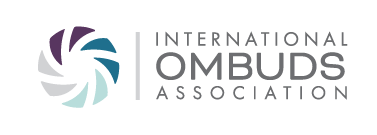Resources to Promote the Ombuds Role
Help IOA Advocate for the Ombuds Profession
There are endless opportunities to increase awareness of organizational ombuds’ importance and value. Below are key resources to help ombuds and our allies promote, explain, and advocate for the ombuds role.
Video: Who Are Ombuds
IOA began a long-term effort to tell the story of the ombuds profession in a new and exciting way with the release of this video about the modern ombuds. Members can also access the Modern Ombuds Communications Toolkit which includes additional resources and messages to help explain what we do, how we do it, and why it’s important.
Celebrate Ombuds Day!
Every second Thursday of October people from around the world take time to celebrate Ombuds. IOA wants to invite you to take part in these celebrations.
Ombuds Day serves as an additional opportunity to educate and raise awareness among the public about the history and practices of the ombuds profession including the various ombuds models, the roles they play, the services they offer, and the value provided.
Ombuds General Introduction Slidedeck
Summary: A set of PowerPoint slides designed to introduce a general audience to the ombuds role. These slides are meant to be incorporated into others’ presentations and are made available for your use.
Ombuds Office Toolkit for Higher Education Institutions
Guide for Setting up a Conference Ombuds Program
IOA developed this guide of sample documents as a public service in light of the increasing demand for the provision of ombuds services at conferences of professional associations and other organizations
The Benefits of an Ombuds Office
A one-page list of commonly-cited benefits of having an ombuds office in an organization.
How Do Ombuds Fit?
A one-page explainer of how ombuds fit into an organization’s structure.
Prepared to be Valuable: Positioning Ombuds Programs
Journal of the International Ombudsman Association, 2014
By Andrea Schenck & John W. Zinsser
Abstract excerpt: Organizational Ombuds and host organizations wish to account for the value Ombuds programs’ presence and activities generate. This long-standing interest promulgated qualitative (usefulness) and quantitative (return on investment) efforts. Despite this debate, few have enacted the leading practice to fully measure and properly communicate their programs’ contributions and value. The authors’ core thesis asserts an expanded paradigm will allow programs, host organizations, and the public to better understand how the contributions programs make can be acknowledged and recognized as value additions. Optimally, these new patterns will stimulate higher usage rates, promote existent programs’ sustainability, and increase the introduction of new programs.
Why and How The Ombuds Office Demonstrates Value To The Organization
Journal of the International Ombuds Association, 2014
By Bob O’Connor
Abstract excerpt: This paper is offered to those who are interested in demonstrating the value of an Ombuds office to leaders in an organization. It, therefore, builds upon the presumptions that leaders may know little about what an Ombuds office is, whether it “works,” and what are its benefits. ...It is concerned with the Ombuds office’s attempts at self-justification to those who may be doubtful about its necessity, purpose, methods, or efficacy. The desired outcome will lead to improved communications between Ombuds and those with whom they communicate about the office and its value to the organization.
More Resources
IOA is committed to providing relevant information on the organizational ombuds profession and related topics. Explore available resources in the Resources menu tab. Some resources are available to members only, as a benefit of membership. Learn more about joining IOA.
If you are aware of additional relevant resources that are available in the public domain or by permission, please contact the IOA at [email protected] about adding those resources to this collection and/or the IOA Clearinghouse.
|
